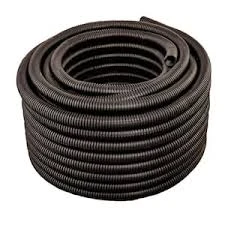welded steel drag chain
Understanding Welded Steel Drag Chains
When it comes to material handling solutions in industrial settings, welded steel drag chains have emerged as a reliable and durable option. These drag chains are engineered to facilitate the smooth and efficient movement of various materials, making them a staple in manufacturing, mining, and construction industries. This article delves into the features, advantages, applications, and considerations of welded steel drag chains.
What are Welded Steel Drag Chains?
Welded steel drag chains are robust conveyor systems designed to transport bulk materials over diverse distances. They consist of interconnected links made from structural steel, which are welded together to enhance strength and longevity. This design ensures that the chains can withstand heavy loads and resist wear and tear from abrasive materials.
Key Features
1. Durability The welded construction of these chains provides exceptional resistance to impact and abrasion, making them suitable for heavy-duty applications. The steel material is often treated to resist corrosion, ensuring a longer lifespan even in harsh environments.
2. Flexibility Welded steel drag chains can carry a wide variety of materials, from loose granules and powders to larger bulk items. This versatility makes them ideal for various industries, including agriculture, mining, and recycling.
3. Efficiency These chains are designed for seamless operation, allowing for continuous material flow with minimal downtime. The interlinked structure reduces friction and prevents jamming, contributing to higher operational efficiency.
4. Customizability Manufacturers often offer customization options for welded steel drag chains. Businesses can specify the length, width, and design of the chains to suit their particular needs, ensuring optimal performance in their specific applications.
Advantages of Welded Steel Drag Chains
- Strength The significance of strength cannot be overstated in industrial applications. Welded steel drag chains possess a higher load-bearing capacity compared to plastic or non-welded alternatives, making them suitable for heavy materials.
- Cost-Effectiveness While the initial investment in welded steel drag chains may be higher than other options, their durability can lead to significant cost savings over time
. Fewer replacements and lower maintenance needs also contribute to long-term financial benefits.- Safety The solid structure and reliability of welded steel drag chains reduce the risk of material spillage or equipment failure, enhancing workplace safety.
- Low Maintenance Welded steel drag chains require minimal maintenance compared to other conveyor systems. Regular inspections and the application of lubricants are usually sufficient to ensure longevity and efficiency.
welded steel drag chain

Applications
Welded steel drag chains are employed across various sectors due to their versatility
- Mining In mining operations, these chains are essential for transporting ores, gravel, and other materials from mining sites to processing plants.
- Agriculture They are used in the agricultural sector for tasks such as moving grain, feed, and fertilizers in bulk handling facilities.
- Recycling In recycling operations, welded steel drag chains facilitate the movement of metal scrap, plastics, and other recyclables through sorting and processing stations.
- Manufacturing Many manufacturing plants use these chains for transporting products along assembly lines or through packaging processes.
Considerations Before Implementation
When considering the adoption of welded steel drag chains, businesses should take several factors into account
1. Load Requirements Analyze the weight and type of materials that will be moved to ensure the selected chain can handle the loads effectively.
2. Environmental Conditions Consider the working environment, such as exposure to chemicals or extreme temperatures, as this may influence the choice of materials and coatings.
3. Space Constraints Evaluate the available space for installation to determine the appropriate design and dimensions of the drag chains.
4. Cost Analysis Conduct a thorough cost analysis, taking into account not only the initial investment but also the potential for long-term savings through reduced downtime and maintenance.
Conclusion
Welded steel drag chains represent a highly efficient and durable solution for material handling in various industrial applications. Their strong construction, flexibility, and low maintenance needs make them a preferred choice for businesses looking to optimize their operations. By understanding their features and applications, organizations can enhance their productivity and efficiency, ultimately leading to a more effective material handling process.








